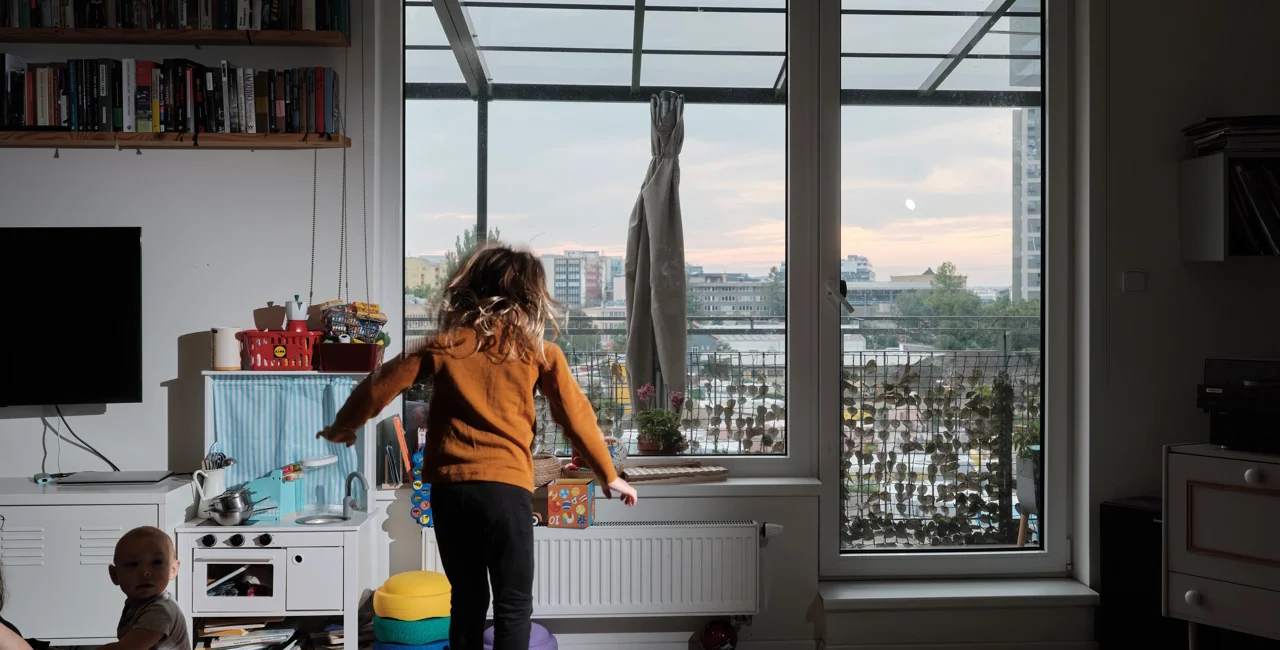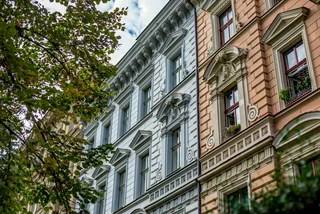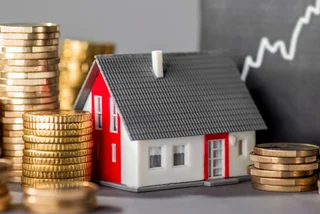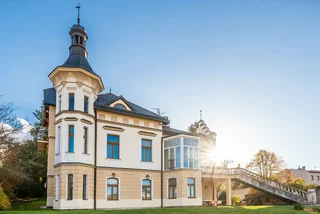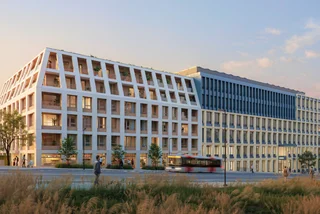What is it like to live in a flat in Prague and how do apartment prices and sizes in the Czech capital compare to those in Munich, Warsaw, or Brussels? A new exhibition at the Center for Architecture and Metropolitan Planning (CAMP) answers these questions via original photos, a wealth of statistics relating to typical apartment size, layout, and rent, and one very long couch.
“Prague Tomorrow? Houses and Apartments” illustrates how the city's property offerings must adapt to the future population's needs. It points to the need for a coherent city policy that will ensure new flats are built. It also lets visitors peek into different types of flats and see how people live via an audiovisual presentation.
At the center of the exhibit is a large sofa and a rug, which together show the area of the smallest flat available in Prague.
Prague Institute of Planning and Development director Ondřej Boháč said that in light of the current housing crisis, the new exhibit aims to examine, “The construction of new apartments and houses and show where they are being built, how real estate prices are developing, and what the city can do to ensure that there is enough housing in Prague for current and future residents."

High prices, low construction output
According to the 2021 census, Prague was home to 1,301,432 people and has 721,332, including unoccupied ones. This comes to 554 dwellings for every 1,000 inhabitant. Munich has about 552 flats per 1,000 people, Vienna has 561, and Warsaw has almost 570. Berlin on the other hand has just under 530.
In comparison to other cities, Prague isn't very densely populated. On average 26 people live in every hectare, while Munich, Vienna, Amsterdam, and Berlin have about twice as many people in the same space.
The pace of construction in Prague lags behind other European capitals. In the past decade, four flats were built per 1,000 people. In Munich during the same time, five were built and in Warsaw, it was 10.
Anatomy of a Prague flat
- An average Prague flat is about 70 sq m but newer buildings tend to be smaller
- The most common flat size is between 60 and 79.9 sq m
- The largest group of Prague apartments (26 percent) have three rooms
- District heating provides the main source of heat for Prague flats
- The average Prague apartment is 60 years old
- Most households live in flats built between 1920 and 1970
- Just over one-fifth of people live in flats built in the past two decades
- Apartments make up about 86 percent of Prague’s housing stock
Praguers are well aware of recent skyrocketing real estate prices in the capital. Rent per square meter per month in Prague comes in at CZK 360, compared to a national average of CZK 272. A prospective buyer has to pay 13 annual salaries, compared to about five annual incomes in Belgium, Portugal, and Denmark or six in Italy, Romania, and Germany. The cost of buying an apartment is roughly CZK 155,800 per square meter according Deloitte data featured in the exhibit.
The future of Prague housing
In the early 1990s, cooperative housing rented out by the city, accounted for 60 percent of flats. That number has fallen to 10 percent. A strategy developed by the city in cooperation with the Prague Institute of Planning and Development calls not only for flats to be built by the private sector, but also by the city to help renew the stock of flats that the city can rent out at affordable prices.
According to a strategic document for housing development approved by City Hall last year, 9,000 new flats should be built every year to keep pace with population growth. “That means approximately one completed flat per hour,” Prague Mayor Zdeněk Hřib said.
A new Prague Development Company could help resolve the situation by restarting municipal construction in the capital. Over 600,000 square meters of land has already been transferred to it, on which 6,000 to 8,000 flats could be built in five to 10 years, CAMP said.

Hřib pointed out that Prague is expected to grow by about 400,000 inhabitants by 2070. “How and where these people will live in Prague is very important," he said.
“Prague Tomorrow? Houses and Apartments” runs until April 30 at CAMP, Vyšehradská 51, Prague 2. It is open daily except Monday from 9 a.m. to 9 p.m. Admission is free. Much of the exhibit is in Czech, but a free catalog in English and Czech is provided .












 Reading time: 3 minutes
Reading time: 3 minutes 